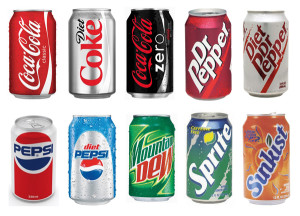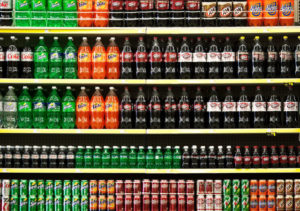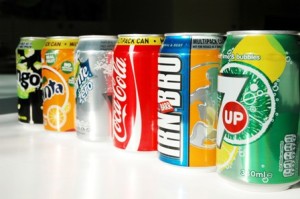 One in four consumers are drinking less Carbonated Soft Drinks (CSDs) than they were six months ago and half of those are doing so because they contain too much sugar, new research from Mintel reveals.
One in four consumers are drinking less Carbonated Soft Drinks (CSDs) than they were six months ago and half of those are doing so because they contain too much sugar, new research from Mintel reveals.
Mintel’s research finds that a quarter (25%) of Brits are consuming less CSD’s than they were six months ago – rising to a third (34%) of those aged 16-24. Of those consuming less CSDs in 2014, 50% said they were doing so because they contained too much sugar.
Following this decrease in demand, consumption has inevitably taken a knock and is expected this year to fall to its lowest point since 2010. Brits consumed 5.96 billion litres in 2010, whilst this rose to 6.17 billion litres in 2011, this has declined to just 5.95 billion litres in 2014. In terms of value sales, Mintel expects these to reach just £7.5 billion in 2014, compared to £8.3 billion in 2011.
Richard Ford, Senior Food and Drink Analyst at Mintel said: “The findings of our research come as the debate over sugar’s contribution towards the nation’s growing obesity continues to be played out in the media, with CSDs being highlighted as one area for improvement. As such, CSD manufacturers continue to launch lower-sugar and sugar-free variants of their standard soft drinks, the highest-profile example of which is Coca-Cola’s forthcoming launch of Coca-Cola Life, which contains a blend of sugar and the sweetener stevia leaf extract, in the UK this September.”
 “That CSDs meet a strong perceived need to quench thirst amongst consumers means that, in one sense, the category is well-placed in consumers’ minds. However, whilst the industry has been proactive in tackling concerns around the high sugar content of some of the drinks by introducing lower-sugar or lower-calorie variants, more work is needed,” added Richard.
“That CSDs meet a strong perceived need to quench thirst amongst consumers means that, in one sense, the category is well-placed in consumers’ minds. However, whilst the industry has been proactive in tackling concerns around the high sugar content of some of the drinks by introducing lower-sugar or lower-calorie variants, more work is needed,” added Richard.
Further to this, Mintel’s research also sheds light on other important reasons why some consumers are drinking less CSDs. A third (34%) of those drinking less carbonated soft drinks than six months ago said they were doing so because they were worried about the health impacts of artificial sweeteners. Meanwhile, Government initiatives are also affecting consumption with one in six (16%) saying they are drinking less due to health campaigns such as Change4Life.
Earlier this year, additional Mintel research identified that a third (32%) of those who had drunk fruit juice, juice drinks and smoothies in 2013 said they limited their consumption of juice drinks due to their high sugar content.
Despite the fact that some Brits are drinking less – consumers still recognise CSDs’ functional role with over half (55%) of CSD consumers turning to them to quench their thirst, and over a third (37%) drinking them to accompany a meal. Additionally, a quarter (24%) of those over 18 drink them as an alternative to an alcoholic drink in a bar, pub or restaurant, and one in five (21%) of those over 18 who have used CSDs at home consume them as an alternative to an alcoholic drink at home.
 Moreover, indicating that CSDs brands should do more to ensure they can be easily identified at point-of-sale, almost two thirds (61%) of CSD drinkers say that pubs, bars and restaurants should make the drink more visible to consumers. Despite this, earlier Mintel research has found that a third (34%) of those who have bought soft drinks in these places feel there is a stigma attached to drinking them.
Moreover, indicating that CSDs brands should do more to ensure they can be easily identified at point-of-sale, almost two thirds (61%) of CSD drinkers say that pubs, bars and restaurants should make the drink more visible to consumers. Despite this, earlier Mintel research has found that a third (34%) of those who have bought soft drinks in these places feel there is a stigma attached to drinking them.
“That the range of CSDs sold in bars, pubs and restaurants is more limited than of alcoholic beverages plays a role in their lesser visibility. Taking cues from alcoholic beverage brands, CSD operators can help drive visibility by providing more decorative and functional branded paraphernalia to proprietors, such as bar mats and bar-top drip trays. As soft drinks often lack the draught pumps common to alcoholic drinks, this exacerbates the issue. Distinctive, shaped glasses could also help CSD brands to standout,” Richard concludes.

You must be logged in to post a comment Login